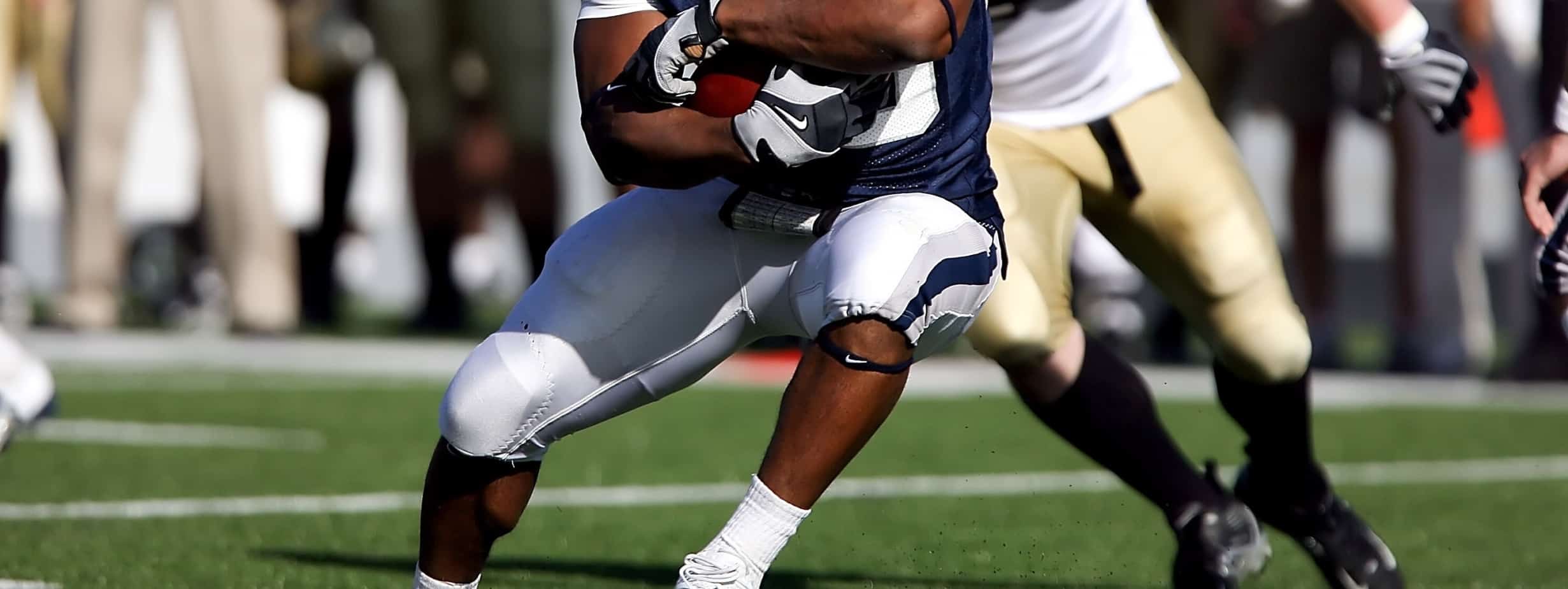Your weekly research review
Contents of Research Review
- Background & Objective
- What They Did
- What They Found
- Practical Takeaways
- Reviewer’s Comments
- About the Reviewer
- Comments

Background & Objective
Despite the increase in ACL injury prevention programmes (IPP’s), there has not been any significant decrease in ACL injuries over the past decade. Correlations have been found between trunk control and some of the known biomechanical risk factors for non-contact ACL injury. However, the current research on trunk kinematics and how they relate to these risk factors is lacking. This study investigated the effect of a 6-week dynamic core stability programme (DCS) on trunk and lower-extremity (LE) biomechanics during both anticipated and unanticipated cutting tasks.
What They Did
Participants were 31 male, collegiate-level football players, at least 18 years old, and were randomised to either the DCS (15) or control group (16). The DCS group performed 3 sessions per week for 6 weeks, in addition to their normal team activities. Each session consisted of 8-10 exercises, 3 sets of 20 reps each, and lasted 10-14 minutes. The exercises were largely static core exercises, though were performed in 3 phases. Phase 1 focused on controlled movements of the trunk, hips, and arms in the cardinal planes. Phase 2 focused on performing the exercises on unstable surfaces (e.g. wobble board or exercise ball). Phase 3 added perturbations to the unstable surfaces, requiring increased dynamic trunk control.
What They Found
The following variables were analysed and compared between groups during anticipated and unanticipated side and crossover cutting drills: kinematics of the trunk, hip, knee, and ankle, internal moments of the hip, knee, and ankle, and ground reaction forces (GRFs). When analysing the between-group differences of the side cutting maneuvers (anticipated), the authors found greater internal hip extensor moments, lower knee valgus and external rotator moments, and lower posterior GRFs in the DCS group vs. the control group. When analysing the crossover cutting maneuver, they found lower posterior GRFs during both anticipated and unanticipated tasks, as well as greater ankle DF during stance phase in the DCS group after the intervention.
Practical Takeaways
Unfortunately, this study concluded that a DCS programme did not have any significant effect on trunk kinematics. It did, however, demonstrate significant improvement in LE kinematics in anticipated cutting tasks, which can reduce the risk of ACL injury in more predictable situations on the field.
Previous research performed on trunk mechanics during cutting and its correlation with ACL injury risk demonstrates that trunk side bend and rotation in the direction towards which the athlete plans to cut is associated with increased knee valgus and increased risk of ACL injury. Therefore, it may be more beneficial to investigate the utility of a programme that directly targets trunk mechanics vs. just dynamic core control exercises.
It must also be remembered that the cohort studied here was both small and relatively homogenous, in that it was all young, male, elite football players. This group of athletes may very well have had sufficient dynamic core control prior to the study.
These results do not mean that coaches and clinicians should not include dynamic core stability exercises in their training. In fact, the findings of decreased posterior GRFs, increased internal hip extensor moments, decreased internal knee valgus, and external rotator moments all serve to reduce stress on the ACL. Though these were found in anticipated cutting only, there are still a good amount of predicted cutting movements that occur during sport along with the unanticipated movements. Therefore, this training is not futile.
Reviewer’s Comments
“I feel that the potential benefits of this training may be somewhat undermined in this study due to its homogenous cohort, as well as the possibility that the exercises included may not have been challenging enough for these athletes. Dynamic core stability, particularly while jumping and cutting, are extremely important in maintaining good LE alignment and good landing technique, both of which are critical for reducing non-contact ACL injury risk. Knowing this, it is appropriate and important to include this type of training with your athletes and patients, as there will surely be carry over into game-time situations.
Perhaps where the research can go further is by investigating the additional impact of perturbations to the athlete while he/she is both in the air during a jump or in the midst of cutting/changing direction. Similar data could be collected, but the challenge and carry over to high-level sport may be greater. Overall, I think the message to coaches and clinicians is to meet your patient or athlete where they are, and challenge them appropriately by utilising dynamic core stability drills and ideally incorporating those movements into sportspecific activities.”
Want to learn more?
Then check these out…
Read this article
Read this article
Read this article
Read this infographic
The full study can be read here.


